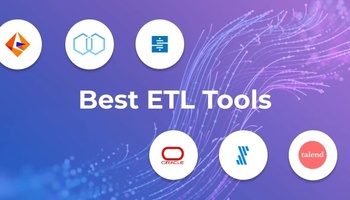Data integration has been around for decades in some form or fashion, as organizations are always looking for ways to combine their enterprise data and collect it in a centralized location.
The most commonly used and dominant type of data integration is ETL (extract, transform, load). ETL first extracts data from one or more source systems, transforms it as necessary, and then loads it into a target warehouse or data lake. In recent years, many enterprises have experimented with an ELT (extract, load, transform) pipeline, which first loads data into the target location before transforming it in place.
Now there's a new paradigm in the mix: Reverse ETL. But what is Reverse ETL exactly, and what are its use cases and benefits? Keep reading for the answers to your questions about Reverse ETL.
What is Reverse ETL?
Standard ETL is an essential part of enterprise data management. It extracts information from data sources such as files and SQL databases (along with the associated metadata, if needed), and then loads it into data warehouses such as Amazon Redshift, Snowflake, and Google BigQuery.
As the name suggests, Reverse ETL flips around the order of operations within the traditional ETL process. In her article "Reverse ETL—A Primer," Astasia Myers, investor at Redpoint Ventures, defines reverse ETL as "the process of moving data from a data warehouse into third-party systems to make data operational."
In other words, Reverse ETL treats traditional ETL targets as sources, and traditional ETL sources as targets. It first extracts the data from a data warehouse or data lake, transforms it as necessary, and then loads it into a third-party SaaS application or platform.
Where Were Companies Before Reverse ETL?
Reverse ETL has been around a long time, but it was not until lately that the data management community explicitly defined the concept as an ETL process. Before reverse ETL solutions, teams would have to create their own API connectors between their data warehousing technology and their operational systems (e.g. Salesforce, HubSpot, Marketo, etc.), so that business users could access datasets directly within these third-party applications.
However, creating your own API connectors has several downsides:
- Manually creating API connectors from scratch can take several days to a week or more, even if you have a technically qualified in-house team.
- Writing connectors is challenging due to "brittle" API endpoints that may not be able to handle real-time data transfer.
- Your team needs to maintain these connectors over time to account for any changes in the underlying technologies at either end.
These problems have led to a growing interest in alternative ETL solutions. Reverse ETL solutions allow out-of-the-box connections between the components of your data stack, saving you the trouble of manually building API connectors.
What is the Reverse ETL Flow?
Unlike traditional ETL, the reverse ETL pipeline is not the place where analytics workloads run. Instead, the data warehouse or data lake acts as a centralized "single source of truth" where it propagates data to other parts of your data stack. During reverse ETL, the information extracted from your source data warehouse or data lake transforms to fit the data model of the target location. Reverse ETL can also handle unstructured data stored in your data lake, transforming it in accordance with the given target schema.
How Will Reverse ETL Benefit Data Teams?
There are several ways Reverse ETL will benefit you and your data teams:
Customer relationship management (CRM) software: You can use reverse ETL for your customer data, transferring it to CRM systems such as Salesforce. This can help you quickly and easily identify individual customers and customer segments to focus on. For example, you can sort your customers by lifetime value to find the biggest spenders.
Business intelligence (BI) and analytics: Reverse ETL can also move the data in your data warehouse into your BI and analytics platform of choice, such as Tableau, Qlik or Microsoft Power BI. Reverse ETL is useful for operational analytics, which automatically delivers real-time data to the precise place it's needed most.
Data governance: Adopting an enterprise-grade Reverse ETL solution, rather than building your own manual API connectors, helps you improve your data governance. A single, unified Reverse ETL platform is much easier to manage and monitor than multiple API connectors that need individual maintenance. Reverse ETL can save your data team a lot of time, freeing them up to perform their other duties.
How Integrate.io Can Help
Although the concept of Reverse ETL has been of interest for decades, most organizations have had few options to build their own pipeline outside of manually creating their own API connectors. It hasn't been until recently that organizations have adopted mature, full-fledged reverse ETL solutions. From CRMs to business intelligence to digital marketing, Reverse ETL can help you maintain a reliable, consistent view of your customers across all of your enterprise software and systems.
ETL tools like Integrate.io provide a simple, user-friendly, intuitive interface for building data pipelines. Integrate.io offers more than 100 pre-built connectors between data stores and SaaS applications, making it easy to transport your data wherever it needs to go.
Looking for your next ETL solution? Give Integrate.io a try. Get in touch with our team of data integration experts today for a chat about your business needs and objectives, or to start your 7-day demo of the Integrate.io platform.











